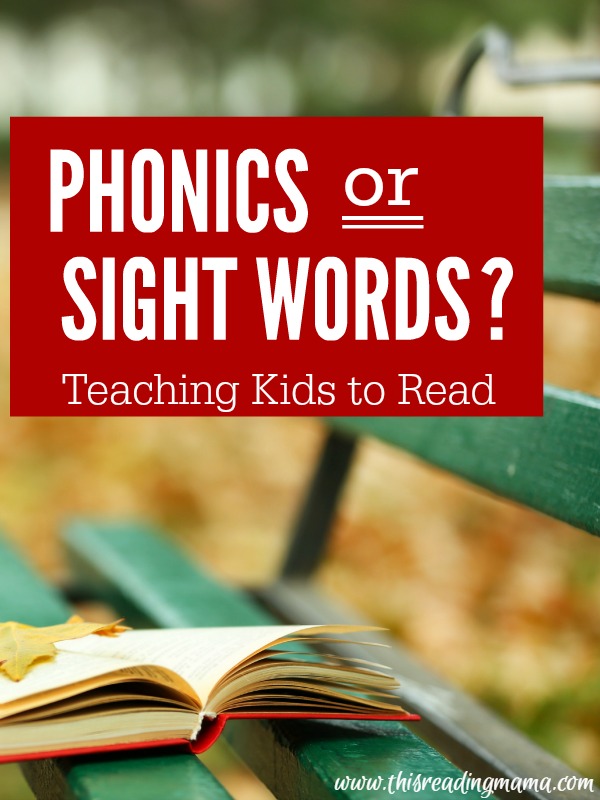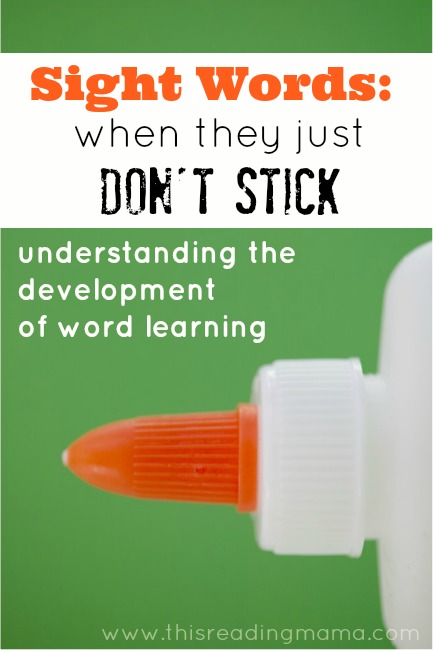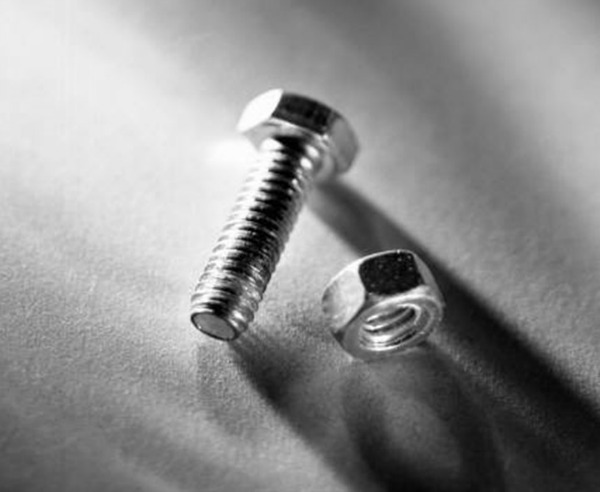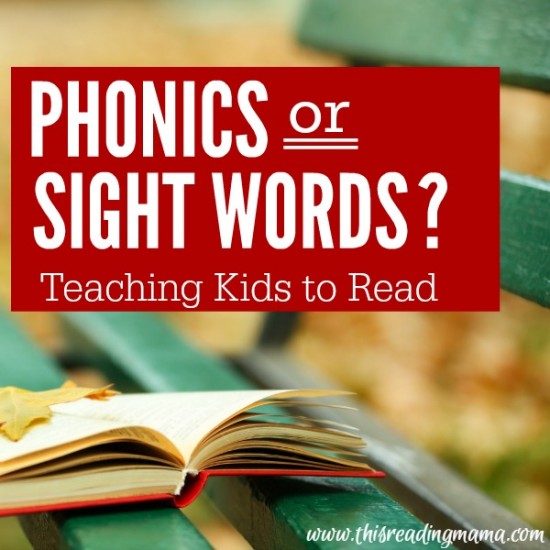So which is it? Phonics or sight words? This is how some approach the art of teaching reading. It’s got to be one OR the other. But if you’ve read my blog for very long, you already know my answer. And you also know that I’m setting you up by asking the question with an or in the middle of it. 🙂

Undoubtedly, my answer to the question is BOTH, with a high dose of naturally immersing and integrating it into your day, such reading (everything) together, pointing out letters, words, and phonics patterns, singing, playing with sounds in words, watching educational shows, playing educational games; multiple and meaningful exposure is what I like call it.
Why Phonics?
The English language is based on the alphabetic principal. Letters make sounds, certain combinations of letters make sounds, etc. And these letter patterns/combinations are more reliable than you think if you study them closely. Word study is a great way to help kids understand the logic (or “rules”, if you’d like) of these patterns. The goal of any spelling or phonics program should be to help kids “crack the code” and apply the “codes” in other words as they read and spell. Programs that focus on learning words by sight only unfortunately ignore the “code” of our language; that our language is indeed alphabetic.
Phonics begins with making letter-sound associations. Without this basic knowledge of letters and their corresponding sounds, learning words would be quite a futile task for most, if not all, children. In my post, Sight Words: When they Just Don’t “Stick”, I talk more about how kids develop through word learning and when the best time is to introduce the idea of sight words to kids. 
Why Sight Words?
There are some words that appear with enough frequency in a child’s “diet” of reading and writing that we want her to know them by sight. We call these sight words. Instead of stopping each time to figure out the word using decoding skills (sounding it out or finding word patterns, such as ow), we want the word to become automatic; to be read within one second of seeing it. This DOES NOT mean, however, that phonics cannot come into play, too. It most certainly helps a young reader to understand that she can sound out did; that she can apply her phonics knowledge to the word and read it. But note also that there are some sight words young readers cannot figure out through phonics alone (the, was, and of are just a few).
Two common lists of sight words are Dolch’s word list and Fry’s word lists. Both lists include words that are most commonly found in independent readers for kids, starting in early Kindergarten. Personally, I like Fry’s list better (it’s more comprehensive), but NOTE THIS: ANY word came be a sight word for a child if she knows it by sight, even her name. If a child knows the word by sight, it is a sight word for that child. Sight words typically become automatic when a child has had multiple and meaningful exposure to the word (it goes back to integrating and immersing your kids into words everyday through reading, writing, playing, etc.)
Why BOTH Sight Words and Phonics?
If you’re a math person, allow me to venture here for a moment. When we first teach young children their math facts (4+4=8 and such), we start by pulling out the manipulatives, showing them in concrete ways how 4 of this plus 4 of that equals 8. We want children to understand how the math fact works (the nuts and bolts, if you please). We want them to have the ability to solve different problems by showing us HOW they did it.
But as young children become older children, we want them to move past using, or even needing, those manipulatives to solve 4+4=8. We want their basic math facts to become locked in their memory. Automatic. While they could still show us HOW they got their answer, it isn’t so necessary anymore. As a matter of fact, if the basic math facts do not become automatic, it could potentially hinder further growth in math.  It’s the same with phonics and sight words. We want readers to understand the nuts and bolts of decoding words (phonics). I would even propose that the reason we teach phonics by studying word features is to help words stick better into memory for reading AND spelling. But if we stop at phonics and do not help readers use that knowledge to move words into memory, I believe we are doing them a disservice; for if readers have to stop at many words in a text to sound them out or find patterns they know, growth in their reading could be greatly hindered, especially fluency and comprehension. They need to have words, especially the most common words, locked in memory. Automatic.
It’s the same with phonics and sight words. We want readers to understand the nuts and bolts of decoding words (phonics). I would even propose that the reason we teach phonics by studying word features is to help words stick better into memory for reading AND spelling. But if we stop at phonics and do not help readers use that knowledge to move words into memory, I believe we are doing them a disservice; for if readers have to stop at many words in a text to sound them out or find patterns they know, growth in their reading could be greatly hindered, especially fluency and comprehension. They need to have words, especially the most common words, locked in memory. Automatic.
Two Things to Keep in Mind:
- While we want to pull words out of context (away from actual reading) to study them, analyze them, and play with them, we want to be sure we are always bringing them back to REAL reading and REAL writing.
- Some kids need explicit and systematic phonics instruction (and still struggle to “get it”) while other kids seem to completely unlock the “code” of language by themselves (even as a 3 year old)! All kids are different and they all learn at their own pace.

More Resources:
- My ebook, Teaching Kids to Spell: A Developmental Approach to Spelling, gives lots of hands-on and developmentally appropriate ideas for teaching kids to study words (both with phonics and sight words).
- Phonics vs. Sight Words {from Stories and Children}
- The Teaching of Sight Words {Part 1 and Part 2}
- When Sight Words Just Don’t “Stick”
- Helping Spellers Develop Phonics Generalizations
- Teaching Spelling Through Word Study {10 day series}
Follow This Reading Mama’s board Sight Words on Pinterest.
Follow This Reading Mama’s board Word Study/Phonics on Pinterest. Follow This Reading Mama’s board Hands-On Spelling Ideas on Pinterest.
Enjoy!
~Becky

I love this post! I had someone tell me they were only teaching phonics because their child did not need sight words. I think it is why I love BOB Books. They have phonics and some sight words to start off on. Both together slowly build up reading in a great way!
The crazy thing is that words like cat and dog (totally phonics words, right?) become sight words once the child knows them by sight. So, by teaching phonics and being exposed to these words, they become sight words.
I was JUST having a conversation about this yesterday at our community playgroup. A mom told me she only teaches phonics because she read research that showed that a child’s “memory bank” fills up and gets overloaded when we try to teach too many sight words. I have a hard time believing that. Even as an adult, I think I’m adding new (longer) sight words to my “memory bank” as I read more and more. I’d love to hear if anyone else has seen research pertaining to this concept.
The idea of the memory bank getting filled up makes sense if you are teaching your child sight words at a level that is not appropriate for the child, like I mention here–> https://thisreadingmama.com/2011/08/11/sight-words-when-they-just-dont-stick/ But we want reading to be fluent so that comprehension is at its finest. And getting those words, especially the most common ones, to stick in memory helps in this process. I really like Linnea Ehri’s work for reading research. The Reading Teacher (peer-reviewed journal) is also a great source.
Wonderful post! My daughter is just getting to the point where I need to think about this. I like your idea of using both phonics and sight words – it just makes sense!
Yes, it does. I think we have to remember to keep literacy in balance. If we lean too far one way (phonics) or the other (sight words), our spelling and reading instruction can have holes in it and we want to build a SOLID foundation. 🙂
Have you checked out the new spelling program Spelling U See by the folks at math you see? My oldest son, now 10 has been struggling with reading and spelling for years. I have tried a lot of programs but am impressed with this one and plan to try it out in the fall. Would love to hear your review of it!
Hi Meghan. I don’t know much about Spelling U See. I have only used All About Spelling and Words Their Way. I love both of these because they address phonics and sight words in hands-on, developmentally appropriate ways. I’d be interested to hear what you think once you implement it. 🙂
Great post! Thank you!! I teach special ed (Multiply disabled) and have a hard time teaching this. I have been using BOTH as well bc I have to, please keep sharing any ideas and tips you have!!!
Those of you who are looking for a fabulous reading program, check out Logic of English. It is an incredible program! I was a phonic + sight words person too until I did a ton of research and began this program. I am not against sight words to aid phonics but I teach them a whole new way now. I have seen my six year old go from being a non-reader, to reading words like language and esophagus with ease. She can read books chock full of sight words easily but she can also decode most any word with basic phonograms or some advanced phonograms. Please check out this program! It is well worth your time. Your kids will thrive off of it.
The Logic of English reminds me a bit of Words Their Way. I think kids need to understand that MOST words in the English language are predictable and follow certain “rules”. You just have to understand the logic of it. That’s why I often like to mix sight words and phonics together so kids can see the connection that most words share.
Why not use only those words that are exceptions to phonics (like “Christmas” and “should”) as sight words? Phonics works most of the time, so let it do its job wherever it can. If that’s not what most English speakers wanted, we’d be writing everything with ideographs like the Chinese do.
Thanks for this post. It was really helpful as I’m trying to teach my son how to read. We use All About Reading but I wasn’t sure what exactly a sight word was, this post explains it well.